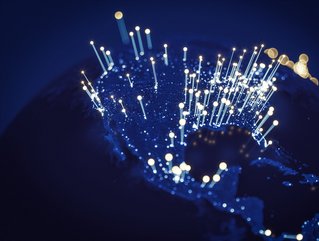Microgrid market to grow $2.1bn by 2025

A report from Global Industry Analytics projects that the global microgrid market will grow US$2.1bn by 2025 - a 16.2% increase.
The US is expected to maintain the highest sectoral growth in the world (17.4%), with some other sources predicting that, by 2040, clean-energy microgrids could be worth a staggering $350bn.
Microgrids are an interconnected series of local electricity sources which can supplement or be independent of traditional electrical grids. The advantages to consumers are increased energy efficiency, lower energy costs, better electrical stability and eco-friendly benefits.
The latter results from the integration of renewable energy sources, such as solar panels and wind turbines, which produce power that can either be stored for later use or used as a primary energy supply.
Solving energy supply issues
In an innovation report by Hitachi America, Alireza Aram, Snr VP and GM, stated his belief that microgrids held the key meeting the modern era’s demand for reliable sources of electricity.
“Against a background of successive natural disasters and terror threats around the world, a steady supply of electricity including measures against power outages is a common social issue for all countries, from the viewpoint of the safety and security of their residents.
SEE ALSO:
“As the introduction of renewable energy proceeds as a measure against global warming, microgrids are looked to as a promising solution to various issues,” he said. However, Aram emphasised that the responsibility to develop this potential lies with companies like Hitachi.
Innovating in the US energy sector
Siemens has been devoting resources to the development of microgrids across the US. The company is currently providing innovative microgrid services to the AURORA Project in California, with Xcel Energy in Denver and with LO3 Energy in New York, as well as others.
Supplying a four-stage circular microgrid offering - simulation, implementing control, monitoring and benchmarking, and continuous optimisation - Siemens states on its website that the reason for its commitment to the technology is its far-reaching applicability:
“Microgrids use a variety of energy sources, including photovoltaic and wind-power plants as well as small hydro-power and biomass-power plants. Biodiesel generators and emergency power units, storage modules, and intelligent control systems ensure the security of supply.
“Siemens provides a comprehensive portfolio of products, solutions, and services to help build and operate microgrids of any size. They provide generation and distribution of electrical energy as well as monitoring and controlling of microgrids.”
For more information on energy digital topics - please take a look at the latest edition of Energy Digital Magazine.
- Tan Delta Technology Empowers the Sustainable Energy SectorRenewable Energy
- Debunking Silicon Carbide (SiC) Myths: The Real StoryTechnology & AI
- Terabase raises US$25m for energy project construction techTechnology & AI
- How can businesses reap the benefits of mobile technology?Technology & AI






